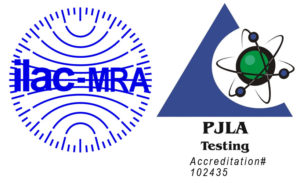High Frequency Testing of Nitinol Stent Material
Stent Testing
by | SFB 1999 | Publications, Stent Testing
High Frequency Testing of Nitinol Stent Material
James C. Conti1, Elaine R. Strope, Ray Gregory2
25th Annual Meeting of the Society for Biomaterials, Transactions, 398, (1999)
Dynatek Dalta Scientific Instruments, Fourth and Main St., Galena, MO 65656
1Southwest Missouri State University, Dept. of Physics
2 Applied Mathematics
SFB 1999
Introduction:
The use of Nitinol in implantable medical products has been increasing at a rapid rate over the last several years. There are two reasons for this: The shape memory properties and the superelasticity which make it highly convenient for the deployment of several medical products, including stents and heart valves. Because of the need for reliable and well-designed durability/fatigue experiments on these products, frequency response determinations of the materials are important so that appropriate protocols can be used.
In most cases the shape memory properties of the Nitinol are trained into it after the fabrication of the final product. As a result, it would be highly beneficial to develop raw material tests for incoming material that are predictory of the performance and properties of the materials in their final state. It is the purpose of this study to carry out initial investigations into the engineering properties of Nitinol wire that predict the performance of the material when fabricated into the final devised shape, as well as the speeds with which to test these final products.
Methods I:
Samples of Nitinol wire of varying diameters were subjected to four point bend testing at a frequency of 1Hz. After that, the largest wire was subjected to four point bend testing at 1, 20, and 40Hz, and three point bend testing at 1, 10, 20, and 40Hz. The testing was carried out at room temperature and in air with an electromagnetically actuated micromechanical tester.
Results I:
Table 1 is a summary of the results obtained from the three point bend test. The corrected simple modulus represents the slope of the stress-strain curve corrected for the cross sectional area of the wire. This simplifies the calculations and allows for the observation of the comparative properties of the material at different frequencies, rather than the absolute properties. The hysteresis column represents the difference in the integrated area under the forward portion minus the return portion of the cyclic loading curve.
As can be seen from the data, the apparent modulus of the material increases measurably when the speed of the test changed from 20 to 40Hz. Interestingly, the largest change in hysteresis occurred from 1Hz to 10Hz, Also, the increase in corrected simple modulus, when increasing the speed from 20Hz to 40Hz, is not accompanied by a measurable change in the hysteresis of the test.
Table 1
Nitinol – Three Point Bend Test
|
DIA. µ (in) |
Freq.
|
Simple Modulus (mN/µ/mm2) |
Hysteresis
|
| 483 (0.019) | Hz | 0.3873 | < 1% |
| 483 (0.019) | 10Hz | 0.4480 | 6% |
| 483 (0.019) | 20Hz | 0.4540 | 8% |
| 483 (0.019) | 40Hz | 1.0751 | 8% |
Table 2 is a summary of the four point bend testing. Again, this is a simple modulus test which reflects the deflection of the contact points, rather than actual deflection of the bottom part of the wire. As before, this was done in order to simplify the analysis, allowing comparison at the different frequencies. In this instance, a large increase in corrected simple modulus is seen with increase in wire diameter for testing at 1Hz.
These changes could, however, be a reflection of the fact that we are not measuring the deflection of the lowest point in the wire. Also, the frequency change from 1Hz through 40Hz is accompanied by an increase in the simple modulus and an increase in the percent of the input energy lost through hysteresis.
Table 2
Nitinol – Four Point Bend Test
|
DIA. µ (in) |
Freq.
|
Simple Modulus (mN/µ/mm2) |
Hysteresis
|
| 229 (0.009) | 1Hz | 0.2146 | < 1% |
| 330 (0.013) | 1Hz | 0.7243 | < 1% |
| 483 (0.019) | 1Hz | 0.8031 | < 1% |
| 483 (0.019) | 20Hz | 1.2729 | ~ 3% |
| 483 (0.019) | 40Hz | 1.4907 | ~ 6% |
Methods II:
Samples of Nitinol wires incorporated into actual stent/grafts were subjected to three point bend testing at point spacings of 1 inch and 2 inches. Compression was delivered at a deflection of 0.1 or 0.2mm at frequencies up to 100 Hz. Similar samples were subjected to four point bend testing.
Results II:
Tables 3-7 show the results of these experiments. Similar to the first series, a change in the simple modulus occurred at frequencies above 20 Hz. Figures 1-7 show how increasing the frequency of the testing results just in increases in hysteresis and then erratic traces. These erratic results could be the result of harmonics in the material.
Discussion:
Our attempt in this study was to compare three point and four point bend testing of incoming raw material Nitinol wire to be used eventually for the fabrication of stents or other implantable cardiovascular products, as well as Nitinol wire in the form of a stent. It was our intention to evaluate how the apparent stress-strain relationships varied when testing at different frequencies. Our loading was chosen to approximately replicate the type of loading that one might expect in extreme conditions for a stent implantation, or individual barb loading on a stent graft.
The data seem to suggest that the properties of these materials change measurably at testing frequencies above approximately 20Hz. It is apparent that a modification of the four point bend test displacement measuring might be appropriate when generating the modulus numbers. However, it is unlikely that the percentage hysteresis will change significantly in these tests with that modification of displacement measuring.
The results indicate the need to be particularly careful when testing fatigue or durability properties of incoming Nitinol material and final Nitinol products at frequencies above approximately 20Hz. It is possible that modification of testing parameters might allow more confidence in high speed testing; however, the complexity of Nitinol materials seem to render it somewhat different than standard metal wire testing.
| Table 3 | |||||
|
Three point bend test – one inch separation – loading phase |
|||||
| f | average | stand dev | average | stand dev | avg S mod |
| (Hz) | (mm) | (mm) | (mN) | (mN) | (mN/mm) |
| 0.1 | -0.0767 | 0.0003 | -47.0858 | 0.2700 | 614.1622 |
| 0.5 | -0.0809 | 0.0004 | -48.4530 | 0.5851 | 598.6779 |
| 1 | -0.0814 | 0.0003 | -48.9949 | 0.7697 | 602.1499 |
| 5 | -0.0760 | 0.0008 | -46.2622 | 0.1525 | 608.4459 |
| 10 | -0.0797 | 0.0025 | -48.3630 | 0.9915 | 607.0665 |
| 15 | -0.0867 | 0.0011 | -52.7823 | 1.3337 | 609.0262 |
| 20 | -0.0779 | 0.0008 | -49.9333 | 0.8011 | 641.2663 |
| 25 | -0.0722 | 0.0049 | -43.5215 | 2.9085 | 603.0688 |
| 30 | -0.0581 | 0.0047 | -36.4066 | 3.3118 | 626.2597 |
| 35 | -0.0749 | 0.0087 | -48.4003 | 6.2603 | 645.9110 |
| 40 | -0.0786 | 0.0098 | -45.4620 | 3.7892 | 578.1513 |
| 45 | -0.0653 | 0.0009 | -33.2954 | 0.2930 | 510.1445 |
| 50 | -0.0614 | 0.0004 | -33.3696 | 1.0095 | 543.1845 |
| 60 | -0.0744 | 0.0016 | -32.6593 | 1.9606 | 439.1658 |
| 70 | -0.0739 | 0.0007 | -23.9961 | 3.1533 | 324.7109 |
| 80 | -0.0725 | 0.0017 | -20.5915 | 7.2957 | 283.8897 |
| 90 | -0.0634 | 0.0025 | -22.4093 | 0.5458 | 353.6449 |
| 100 | -0.0384 | 0.0016 | -21.2401 | 6.7653 | 553.1267 |
| Table 4 | |||||
|
Three point bend test – one inch separation – unloading phase |
|||||
| f | average | stand dev | average | stand dev | avg S mod |
| (Hz) | (mm) | (mm) | (mN) | (mN) | (mN/mm) |
| 0.1 | 0.0768 | 0.0005 | 47.1726 | 0.3320 | 614.4933 |
| 0.5 | 0.0810 | 0.0001 | 48.9147 | 0.3362 | 603.8106 |
| 1 | 0.0810 | 0.0003 | 49.3580 | 0.4042 | 609.6085 |
| 5 | 0.0756 | 0.0010 | 46.1238 | 0.4163 | 609.8338 |
| 10 | 0.0798 | 0.0028 | 48.7602 | 1.4759 | 611.2858 |
| 15 | 0.0878 | 0.0028 | 54.0337 | 1.1420 | 615.6517 |
| 20 | 0.0781 | 0.0006 | 50.1868 | 0.8350 | 642.5962 |
| 25 | 0.0652 | 0.0017 | 40.9322 | 2.5635 | 628.1151 |
| 30 | 0.0656 | 0.0039 | 40.7898 | 4.8100 | 622.1124 |
| 35 | 0.0770 | 0.0104 | 46.7420 | 7.0980 | 607.3023 |
| 40 | 0.0785 | 0.0099 | 45.4802 | 4.9886 | 579.3652 |
| 45 | 0.0655 | 0.0005 | 33.4067 | 0.5465 | 509.7660 |
| 50 | 0.0615 | 0.0009 | 33.5632 | 0.5284 | 545.7425 |
| 60 | 0.0732 | 0.0008 | 30.8707 | 1.3555 | 421.9235 |
| 70 | 0.0747 | 0.0013 | 24.8947 | 1.9286 | 333.2624 |
| 80 | 0.0732 | 0.0026 | 21.9791 | 7.1251 | 300.3982 |
| 90 | 0.0632 | 0.0030 | 22.4198 | 0.9708 | 354.7437 |
| 100 | 0.0406 | 0.0053 | 18.3573 | 3.1585 | 452.1511 |
| Table 5 | |||||
|
Three point bend test – two inch separation – loading phase |
|||||
| f | average | stand dev | average | stand dev | avg S mod |
| (Hz) | (mm) | (mm) | (mN) | (mN) | (mN/mm) |
| 0.1 | -0.2003 | 0.0002 | -19.3702 | 0.4452 | 96.7222 |
| 0.5 | -0.2019 | 0.0005 | -19.8923 | 0.0511 | 98.5091 |
| 1 | -0.2025 | 0.0002 | -19.4134 | 0.1973 | 95.8529 |
| 5 | -0.1934 | 0.0010 | -17.9569 | 0.4090 | 92.8645 |
| 10 | -0.1914 | 0.0026 | -16.5510 | 1.0389 | 86.4732 |
| 15 | -0.1950 | 0.0010 | -19.1697 | 0.5602 | 98.3062 |
| 20 | -0.1933 | 0.0011 | -22.7251 | 0.7716 | 117.5637 |
| 25 | -0.2293 | 0.0027 | -26.9705 | 0.1308 | 117.6380 |
| 30 | -0.1932 | 0.0003 | -28.3780 | 1.4227 | 146.9092 |
| 35 | -0.1986 | 0.0098 | -42.5641 | 0.8832 | 214.2848 |
| 40 | -0.1883 | 0.0017 | -22.6495 | 0.9968 | 120.2630 |
| 45 | -0.1888 | 0.0054 | -23.5740 | 2.9542 | 124.8843 |
| 50 | -0.1953 | 0.0005 | -19.6530 | 0.1273 | 100.6468 |
| 60 | -0.1816 | 0.0008 | -33.9532 | 2.5015 | 187.0015 |
| 70 | -0.1931 | 0.0036 | -29.6986 | 1.3017 | 153.7992 |
| 80 | -0.1857 | 0.0006 | -58.3245 | 6.1137 | 314.1355 |
| 90 | -0.0985 | 0.0191 | -54.7739 | 22.2026 | 556.2688 |
| 100 | -0.0550 | 0.0391 | -29.2436 | 4.4126 | 531.3792 |
| Table 6 | |||||
| Three point bend test – two inch separation – unloading phase | |||||
| f | average | stand dev | average | stand dev | avg S mod |
| (Hz) | (mm) | (mm) | (mN) | (mN) | (mN/mm) |
| 0.1 | 0.2001 | 0.0003 | 18.4412 | 1.5567 | 92.1444 |
| 0.5 | 0.2016 | 0.0006 | 20.0123 | 0.2269 | 99.2838 |
| 1 | 0.2020 | 0.0003 | 19.6407 | 0.4230 | 97.2151 |
| 5 | 0.1933 | 0.0007 | 17.7972 | 0.8040 | 92.0864 |
| 10 | 0.1923 | 0.0023 | 16.4193 | 1.3269 | 85.3988 |
| 15 | 0.1946 | 0.0010 | 20.1090 | 0.4656 | 103.3529 |
| 20 | 0.1949 | 0.0010 | 22.2205 | 1.7310 | 114.0097 |
| 25 | 0.2295 | 0.0013 | 26.1323 | 0.9795 | 113.8661 |
| 30 | 0.1944 | 0.0028 | 28.6573 | 1.4395 | 147.3890 |
| 35 | 0.1998 | 0.0107 | 42.4954 | 1.1933 | 212.6899 |
| 40 | 0.1889 | 0.0008 | 22.9813 | 1.2810 | 121.6369 |
| 45 | 0.1852 | 0.0022 | 23.4308 | 3.6852 | 126.5162 |
| 50 | 0.1964 | 0.0012 | 19.8441 | 0.4693 | 101.0222 |
| 60 | 0.1829 | 0.0015 | 33.9479 | 2.5118 | 185.5751 |
| 70 | 0.1953 | 0.0048 | 29.6930 | 1.7734 | 152.0640 |
| 80 | 0.1864 | 0.0021 | 60.3540 | 4.7246 | 323.8453 |
| 90 | 0.1358 | 0.0080 | 55.7985 | 22.7939 | 410.7867 |
| 100 | 0.0637 | 0.0341 | 29.9346 | 4.8459 | 469.9314 |
| Table 7 | |||||
| Four point bend test – two inch separation – Simple Modulus | |||||
| f | S. mod. | ||||
| (Hz) | (mN/mm) | ||||
| 0.1 | 100.4430 | ||||
| 0.5 | 96.8411 | ||||
| 1 | 96.6315 | ||||
| 5 | 94.8309 | ||||
| 10 | 102.2390 | ||||
| 15 | 94.1252 | ||||
| 20 | 78.5111 | ||||
| 25 | 102.2859 | ||||
| 30 | 120.0522 | ||||
| 35 | 141.0999 | ||||
| 40 | 71.6953 | ||||
| 45 | -7.4292 | ||||
| 50 | 18.7877 | ||||
| 60 | -95.7093 | ||||
| 70 | -154.1283 | ||||
| 80 | -45.0895 | ||||
| 90 | -286.0128 | ||||
| 100 | -609.3379 | ||||



